ASUS Zenfone 5z review: An impressive flagship contender
The Zenfone 5z nails it in the hardware department, but loses out on the oomph' factor that rivals possess.

The constantly growing economy has led to increased demand for luxurious commodities, be it automobiles or clothes. The smartphone market is no different — manufacturers are hunting for more customers for their flagship offerings. Taking a cue from premium players such as Apple and Samsung, budget smartphone manufacturers are also trying their hand at premium smartphones packing the latest hardware. This is why we have seen popular budget brands such as Xiaomi, Honor and Nokia trying their hands at premium smartphones, which, while being exorbitantly expensive in comparison to their popular offerings for the masses, sell at slightly lower prices than phones from established rivals, thus marking an entry into the flagship smartphone category for new buyers.
ASUS, a known name in the budget-to-premium segments, has tried the something different this year — competition. And this time, after challenging Xiaomi in the budget/mainstream segment, the new Zenfone 5z is all out to bite into the pie of OnePlus' market share.
MWC 2018 saw the unveiling of the ASUS Zenfone 5z, which made its presence felt by being inspired from Apple's iPhone X. Mocking the latter as the fruit phone, ASUS claimed that they managed to reduce the controversial notch substantially while offering an almost-similar AI-infused performance. After five months, it’s ready to be rolled out to the market, aiming for the affordable flagship category — a category that's presently dominated by the OnePlus and Honor. It has been given a competitive price tag too — Rs 29,999 for 6GB/64GB, Rs 32,999 for 6GB/128GB and Rs 36,999 for 8GB/256GB — just undercutting the OnePlus 6. ASUS is marketing the 5z as the ‘flagship redefined,’ which seems to be a high claim — Does it justify that?
Design, Build:

Most flagship-class smartphones are made using a glass-metal combination, and the Zenfone 5z is no exception — metal frame sandwiched between Gorilla Glass panels. The front is dominated by a large 6.2-inches fullscreen display with a notch on the top and a narrow chin at the bottom. The notch conceals the front camera, the earpiece and the proximity sensor — no fancy 3D facial recognition setup here. As for the rear panel, ASUS brings back its iconic concentric circle design, which is centred around a fingerprint sensor. A vertically mounted dual rear camera setup takes care of the photography.
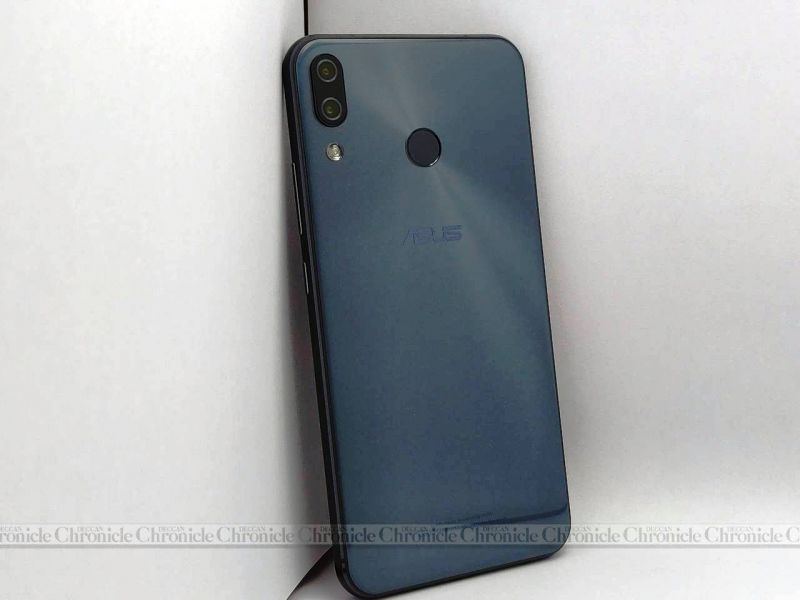
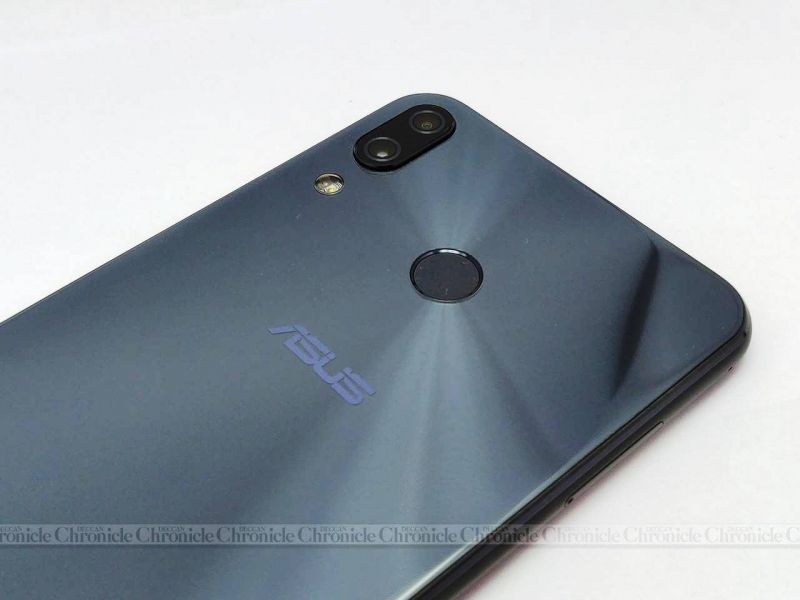
Look around and you will spot a 3.5mm headphone jack, a USB-C port and a loudspeaker. There’s a triple microphone setup which ASUS claims to improve call audio quality. A hybrid Dual SIM slot supports up to 2TB of external storage. The overall form factor feels compact, despite a 6.2-inch display, making it possible to do single-handed operations. Kudos to ASUS for getting the ergonomics spot-on.


The aesthetics of the Zenfone 5z depends on personal preferences. While some state that ASUS has a great job with the design using concentric circles on the rear panel, others claim that it has an old look without a chiselled body that is seen on the OP6. Designs of the Samsung Galaxy S9, Apple iPhone 8 or even its direct rival — the OnePlus 6 seems a class apart for many. However, if you prefer your smartphone to stand out in the crowd, the Zenfone 5z could be your best bet.
Display:
The display is one of the biggest highlights here. While it adheres to the current market trend of putting notched displays to maximise the screen real estate, it manages to do that with an IPS LCD panel. At 6.2-inches, it’s on par with most of its rivals in terms of usable area. LCD panels are tricky to stuff in a narrow-bezel design, which is why most manufacturers head for AMOLEDs, which are easily moulded to fit particular needs. Therefore, the 5z has a noticeable chin at the bottom for housing the display's chips.

That said, the Zenfone 5z’s display is on par with its AMOLED-equipped rivals. The full HD+ LCD panel renders punchy colours with vibrant contrasts and super brightness levels, thus offering a good viewing experience. Sunlight legibility is also good while viewing angles are satisfactorily wide.
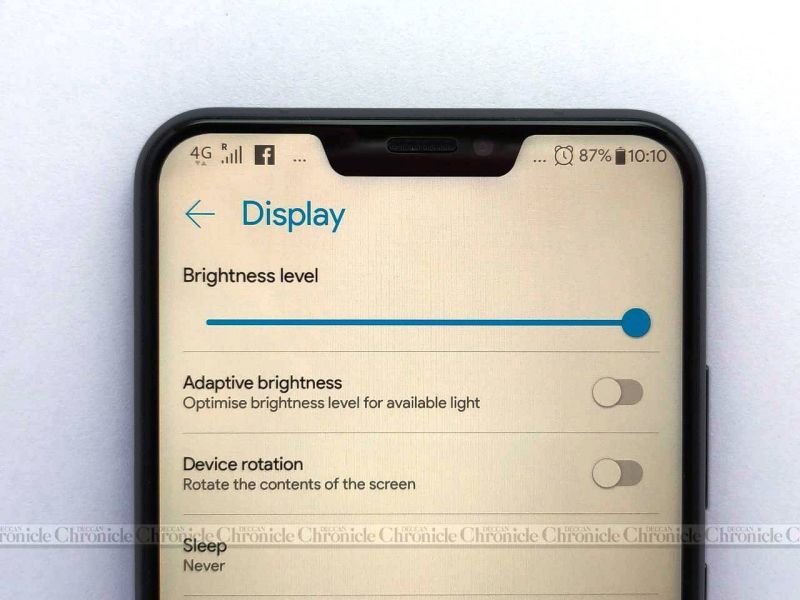
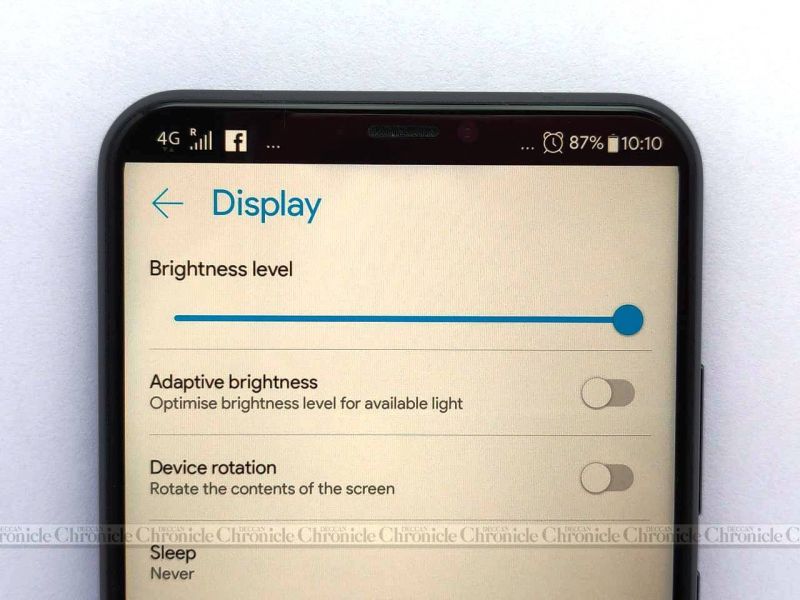
Similar to most of its 'notched brothers', ASUS offers an option to hide the notch using software trickery. However, we personally feel that the fullscreen mode actually help the Zenfone 5z to conceal the UI pretty well. Additionally, the Zenfone 5z also has an auto ambient sensor to match the colour temperature and adjust the display's colour tones depending on the ambient lighting for a best visual experience. The Zenfone 5z also offers additional features such as Bluelight filter, which kicks in to reduce strain on eyes in low light conditions, and Smart Screen On feature, which senses the user's eyes and prevents the display from going to sleep.
Specifications, Performance:
The Zenfone 5z is ASUS’ flagship offering for 2018. Therefore, ASUS has made sure that you get the best of the tech world crammed into the compact confines of the 5z. There’s a Qualcomm Snapdragon 845 chip accompanied by 6GB of LPDDR4X RAM and 64GB of onboard 2.1 UFS storage. To power, the graphics department is an Adreno 630 GPU, which offers stutter-free games when required. The 5z runs on ASUS’ custom ZenUI based on Android 8.0 Oreo. Two more variants, a 6GB/128GB and 8GB/256GB variants are also in store.
Despite being a flagship, the Zenfone 5z offers FM radio — a feature that has been absent in this category for a while. Along with NFC, Wi-Fi networking takes a front seat here with 2x2 MIMO antennas on the 801.11 ac module for faster speeds (up to 866Mb/s).
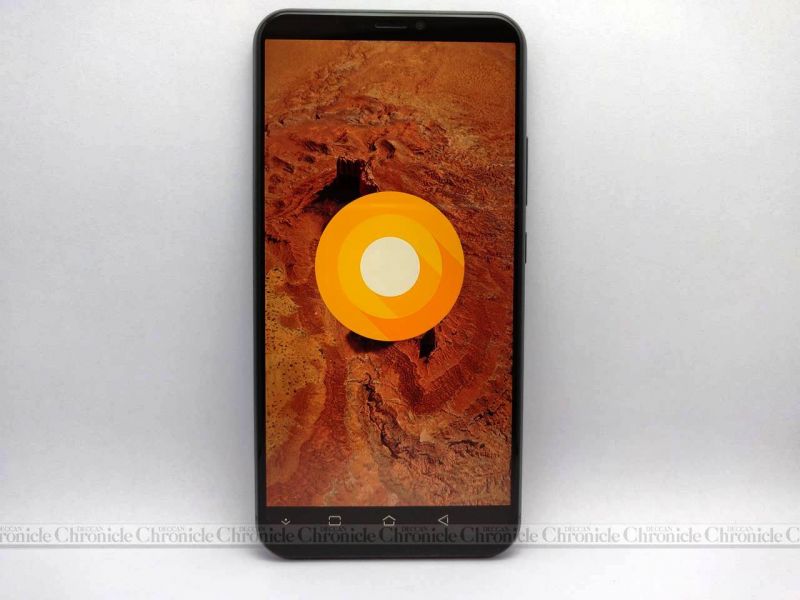
A smartphone with such potent hardware and the latest operating system is bound to offer lightning fast performance every time. As usual with a flagship phone, the 5z has no trouble with opening apps and shuffling through multiple of them at a time — thanks to the copious amounts of RAM. That’s commendable, considering Zen UI is a highly customised version of Android with additional features that aren’t offered as standard by Google. ASUS is betting on the Snapdragon 845’s dedicated neural networks to power its artificial intelligence capabilities, utilising the chip’s full capabilities.

Stock Android enthusiasts may not agree with ZenUI’s extremely customised approach to Android. AI optimisation is built right into the OS — all the additional features that ASUS has loaded on to the 5z are handled extremely well. Features such as OptiFlex uses the AI capabilities of both the hardware and the software to train the system to load certain apps faster than the others, which is effective in the real world. Similarly, AI is extensively used for photography purposes, touching up photographs to make them look better than usual.

Since facial recognition has become a necessity for premium smartphones these days, the Zenfone 5z flaunts one too. However, it uses only the front-facing camera and its AI algorithms to map the user's face in 3D — no fancy dedicated hardware here. Software-based facial unlock systems usually require a substantial amount of light and are not as secure as the fingerprint scanner. As a result, the 5z's face unlock works well only in brightly lit surroundings — you have to rely on the fingerprint sensor when it gets darker. Additionally, the 3D face mapping is also used for Zenmoji, which is ASUS' take on animated emojis. Users can share Zenmojis via messengers to other non-ASUS users. However. the Zenmojis are not even close to Samsung's AR emojis, leave alone Apple's iPhone X, in terms of fluidity and animations (maybe ASUS can improve with a future software update).
AI is also used for regulating the power while charging the battery, as well as optimising the resources while playing resource-intensive games, ensuring higher frame rates and the highest texture quality possible on Android.
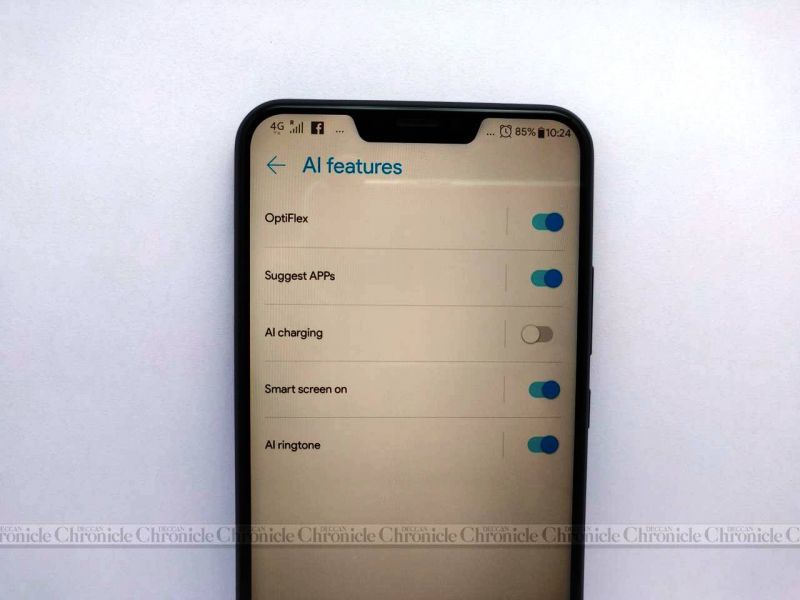

However, ZenUI, despite its AI capabilities, seems to be not completely optimised. The system keeps throwing up stutters occasionally while executing basic smartphone tasks, which ASUS could fix with a software update. What’s not fixable though is the presence of bloat in copious amounts, which does consume resources unnecessarily. Add to that the unpleasant user interface and you are left hunting for a launcher that helps you hide the bulk of the bloat. The design of the navigation buttons and notification shade particularly may not be to everyone's taste.
But, when it comes to audio, the Zenfone 5z registers no complaints. The Zenfone 5z features Hi-Res audio with 192kHz/24-bit standard with the help of Qualcomm' Audio CODEC and AudioWizard. The audio also boasts of DTS (Digital Theater System) Headphone:X 7.1 virtual surround sound for headphone support. A Hi-Res headphone is also bundled along with the phone so that users can listen to pristine audio from their music and videos.
ASUS smartphones are renowned for delivering good audio quality through both the loudspeaker and the 3.5mm headphone jack. The 5z utilises a stereo speaker setup that does a good job of delivering decent audio quality — it's possible to watch YouTube videos outdoors without manually amplifying the audio by your palm. And when there’s a need for headphones, the 5z’s DTS-X enhancements let users tweak the settings to get the suitable results — a plus point for audiophiles.
Camera:
During the launch, ASUS stressed that they have worked on the optics to make sure it’s up with the best in business. There’s a 12MP + 8MP dual rear camera setup. The primary sensor has an aperture of f/1.8, a pixel size of 1.4µm and sensor measuring 1/2.55-inches. The secondary 8MP sensor is a wide angle unit with f/2.0 aperture. Both primary sensors are assisted by a 3-axis Electronic Image Stabilisation (EIS) and the main sensor is equipped with Optical Image Stabilisation (OIS).
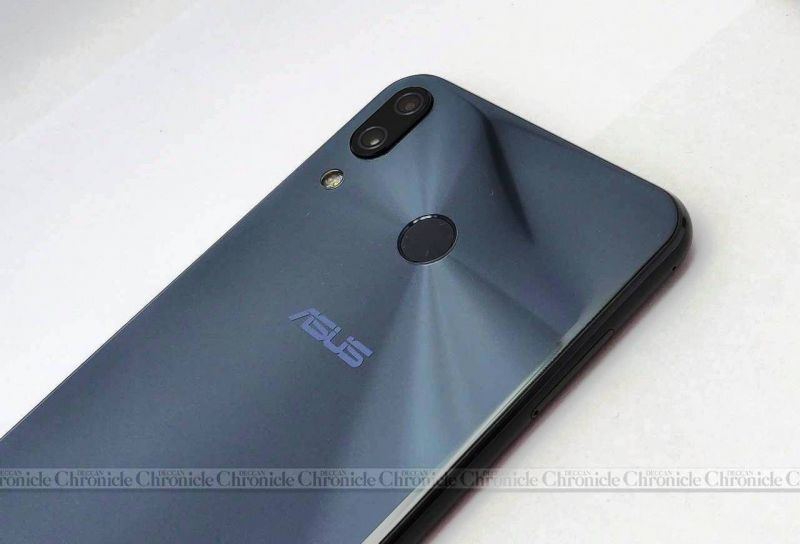
For the most part, the Zenfone 5z’s optics shoot good-looking photos. The camera uses the AI aids by default to enhance the images, which results in photos that appear too far from natural colours and contrasts. Colours are oversaturated while contrasts are enhanced to make the shots look better than what they actually are in reality — they appear to be ready for use in social media platforms. However, the enhancement results in some loss of details. Low light photography is also helped up to an extent where the AI tries its best to filter the noise. Of course, if you want unadulterated performance from the optics, you can opt for the Pro mode and manage all the parameters manually.






 Normal shot
Normal shot
 Wide angle shot
Wide angle shot
The rear shooter can also do 4K videos at 60fps. The OIS + EIS combo results in pretty stable video footages. As for the video quality, the AI once again jumps in to ensure they are enriched with colours, which eventually results in loss of details. The 5z can also shoot slow-motion videos 1080@240fps.
The 8MP front camera also does a fairly decent job of shooting selfies. However, under low light, the photos tend to pick up lots of noise, making them appear grainy. The software-based portrait mode also doesn’t impress with its capability to distinguish the foreground and the background efficiently.
 Selfie in normal mode.
Selfie in normal mode.
 Selfie in portrait mode.
Selfie in portrait mode.
On the whole, the camera is pretty capable, but we feel that ASUS will surely keep tweaking the camera to extract the best out of what’s available.
Battery:
The Zenfone 5z is powered by a 3300mAh battery, which is on par with most of its rivals — thanks to the compact dimensions of the 5z. However, ASUS has optimised the software and the hardware to sip power efficiently, which results in the stamina of a day and a half under casual usage scenarios such as texting, short multiplayer gaming sessions, shooting pictures and browsing the social media — an average of 4-5 hours of overall screen-on time. The battery also fills up fast — thanks to the fast charging. The bundled power adapter is a 9V 2A 18W charger that supports PD 3.0 for fast charging.
Conclusion:
The Zenfone 5z appears to be a careful culmination of flagship grade hardware with smart software. The Snapdragon 845 chip gives the Zenfone 5z brute power to deal with any load you throw at it while ASUS’ ZenUI is clever at utilising the AI capabilities to ensure overall day-to-day performance stays pleasant. The audio experience is sorted and battery life is pretty decent as well. However, stock Android lovers won’t acknowledge the orientation of ZenUI towards extensive customisation. Additionally, the camera performance also leaves a tad to be desired.

Starting at Rs 29,999, the Zenfone 5z surely comes across as a compelling device, even when you consider the drawbacks. However, the performance-oriented OnePlus 6 offers slightly better value in most departments, thereby coming across as a better value-for-money choice. The Zenfone 5z comparatively feels like a flagship smartphone has more room to fill. It has a lot of potential that is yet to be tapped efficiently by ASUS.
To round it up, if you are seeking a premium smartphone that stands out with its aesthetics, 'top notch' specifications (pun intended) and solid everyday performance, then the Zenfone 5z is definitely recommendable.
Pros: Robust performance, smart AI features and decent battery stamina.
Cons: Uninspiring design, heavily customised UI and unimpressive cameras.
Also read: OnePlus 6 review
Click on Deccan Chronicle Technology and Science for the latest news and reviews. Follow us on Facebook, Twitter.

